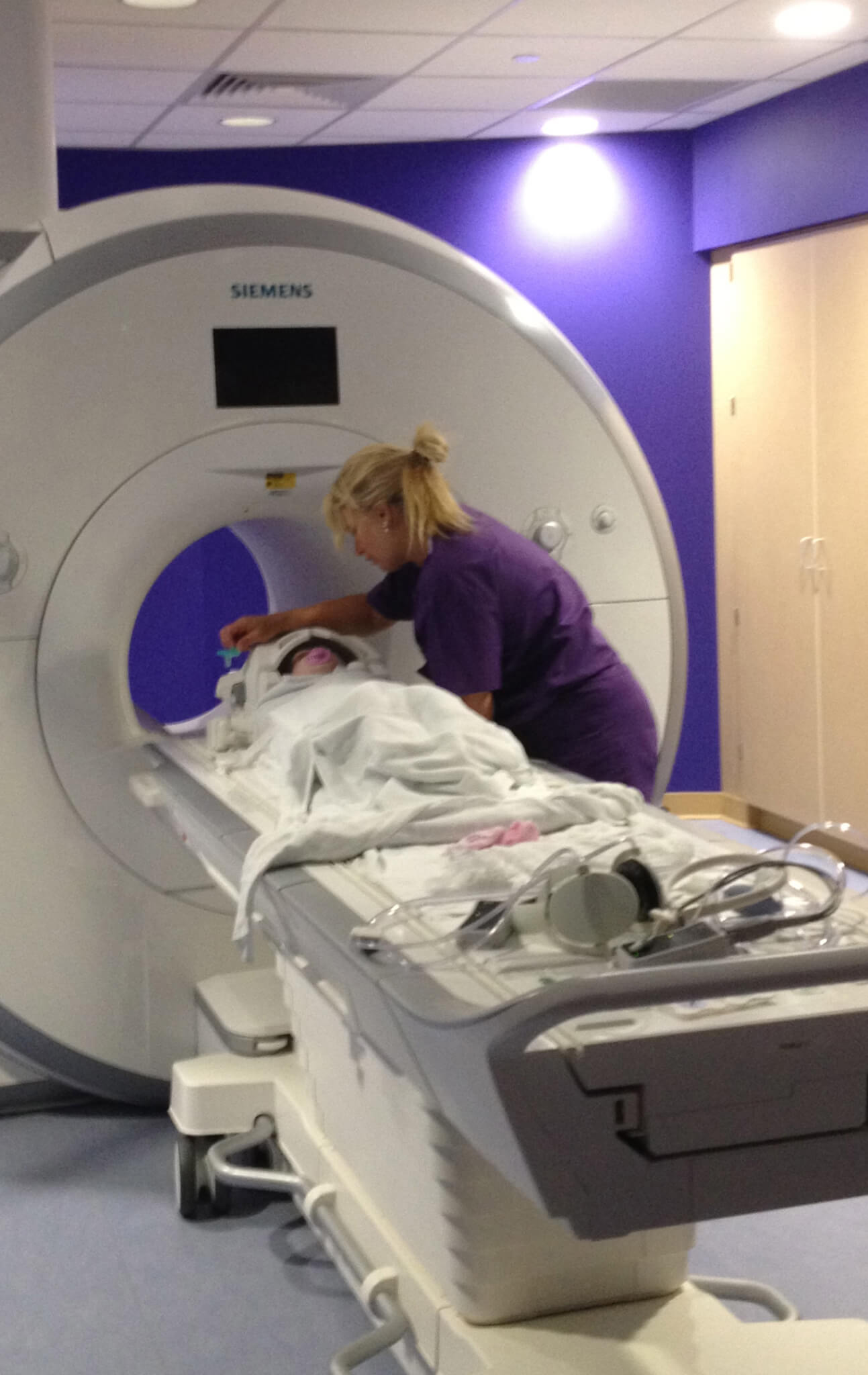What is Krabbe Disease?
Krabbe disease (also called globoid cell leukodystrophy) is a severe, inherited, neurological condition. It is part of a group of disorders known as leukodystrophies, which result from the loss of myelin in the nervous system. Myelin is the protective covering around nerve cells that ensures the rapid transmission of nerve signals.

More Information About Krabbe Disease
Krabbe disease is caused by mutations in the GALC gene. The GALC gene codes for an enzyme called galactosylceramidase, which breaks down certain fats called galactolipids. The build-up of galactolipids causes damage to myelin-forming cells. Without myelin, nerves in the brain and other parts of the body cannot transmit signals properly, leading to the signs and symptoms of Krabbe disease.
There are 4 forms of Krabbe disease that are grouped into two categories. The details of those are as follows:
Early Onset Krabbe disease:
- Infantile Krabbe disease (IKD)-signs of this form begin before the age of 1. The first signs and symptoms typically include irritability, muscle weakness, feeding difficulties, and delayed mental and physical development. As Krabbe disease progresses, muscles continue to weaken because the nerves do not transmit signals properly. This affects the infant’s ability to move, chew, swallow, and breathe. IKD makes up 90% of the cases of Krabbe disease and is the most severe form of the disease.
- Late Infantile Krabbe disease (LIKD)-signs of this form begin after the age of 1 but before the age of 3. The first signs and symptoms include loss of milestones in gross and fine motor skills such as the inability to walk, pull oneself to a standing position, difficulty grabbing objects, and inability to suck on a bottle or swallow food without choking. At times, this form of Krabbe disease can be misdiagnosed as cerebral palsy, dyspraxia, or other more common childhood neurological conditions.
Late-Onset Forms of Krabbe disease:
- Juvenile Krabbe disease-signs of this form of disease appear between the ages of 3 and 16. The signs and symptoms at first glance may not be apparent, especially during the teenage years. The first symptoms of this disease are often vision changes followed by poor eye-hand coordination such as throwing a ball and awkward moving patterns.
- Adult-Onset Krabbe disease-signs of this form of disease appear after the age of 16. Those who are identified with this type of Krabbe disease often experience a long and burdensome journey of multiple misdiagnoses. Symptoms start subtly from vision and hearing deficits to neurons slowly degenerating causing muscle spasticity, stiffness, and weakness in the legs.
In the United States, Krabbe disease affects about 1 in 100,000 births.
Newborn screening is a public health program that screens infants shortly after birth for serious conditions that are not obvious at birth. When identified early, treatment can be started before some of the harmful effects happen. Currently, eleven states have approved screening for Krabbe disease at birth. Screening is not diagnostic, however. Infants who are found to be at high risk for Krabbe disease are referred for further confirmatory testing.
Additional information about Krabbe disease, its management, and information about Krabbe disease clinical trials can be found by following the links below:
- Medlineplus.gov overview
- Raredisease.org overview
- Krabbe-Infantile.pdf (acmg.net)
- Krabbe-Later-Onset.pdf (acmg.net)
- Krabbe disease | Newborn Screening (hrsa.gov)
- https://www.ncbi.nlm.nih.gov/books/NBK1238/
- https://www.ncbi.nlm.nih.gov/books/NBK562315/
- https://clinicaltrials.gov/search?cond=Krabbe%20disease&limit=100&page=1
The Current State of Treatment
Krabbe Disease News
